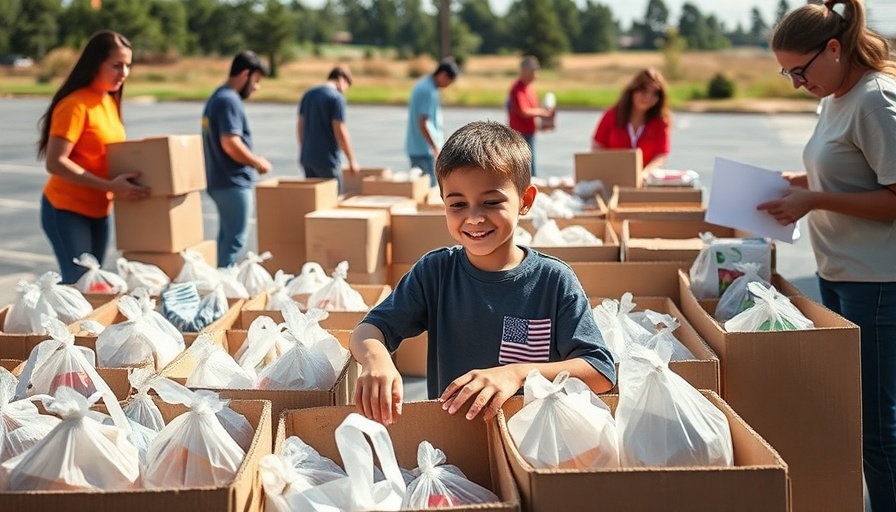
Stretched Resources: The Plight of Tri-State Nonprofits
The Tri-State area is witnessing a troubling trend as nonprofits that serve low-income families are grappling with significant cuts to essential federal funding. The recent decision by the U.S. Department of Agriculture (USDA) to terminate two key programs—Local Foods for Schools (LFS) and Local Food Purchase Assistance (LFPA)—has generated widespread concern among local food banks and community organizations.
Continuing Demand in a Changing Landscape
Despite the end of emergency funding measures, the demand for food assistance remains higher than ever. Kurt Reiber, CEO of the Freestore Food Bank, noted that they have seen a staggering 35% increase in demand over the previous year, which was already their highest to date. In 2024, the organization distributed over 47 million meals, exceeding the total from even the peak pandemic year.
The Impact of USDA Cuts on Local Communities
The loss of the LFS and LFPA programs, amounting to $1 billion in federal funding, threatens the stability of food resources that many families rely on. According to Amberlee Finkes, director of development at Shared Harvest Food Bank, these programs not only supplied nutritious food to vulnerable families but also helped to support local farmers. The partnership with local agriculture has been crucial, providing about 700,000 pounds of food equivalent to 530,000 meals over the last two years. "Without these programs, we face the possibility of losing these essential relationships with farmers," Finkes warned.
Feeding the Food Insecure: Urgency Amplified by Inflation
As inflation continues to impact food and gas prices, coupled with rising costs in childcare and housing, many families are feeling the pinch. Reiber stated, "The families that we serve in the Tri-State area are struggling more than ever with these economic pressures." The fact that both organizations will now have to operate with severely restricted resources raises significant concerns for those depending on food banks for their nutritional needs.
Future Collaborations and Alternative Solutions
While the situation appears bleak, both Finkes and Reiber remain hopeful about collaborating with state officials and Congress to restore and bolster support for their vital work. They stressed the importance of ongoing dialogues with USDA to seek long-term solutions that ensure food security for their communities.
Conclusion: A Call for Community Action
The challenges that lie ahead for Tri-State nonprofits require urgent attention and community cooperation. As these institutions navigate the aftermath of federal cuts, support from local citizens can play a pivotal role in sustaining operations. Community members can assist by volunteering, donating food, or providing funding to alleviate the burden on food banks. Extended outreach will ensure that the most vulnerable among us do not slip into further food insecurity.
As we look ahead, it’s essential to advocate for intentionally structured food assistance programs that prioritize resilience and nutritional equity. Together, we can strive for a future where food resources are abundant and accessible for all.
 Add Row
Add Row  Add
Add 




Write A Comment